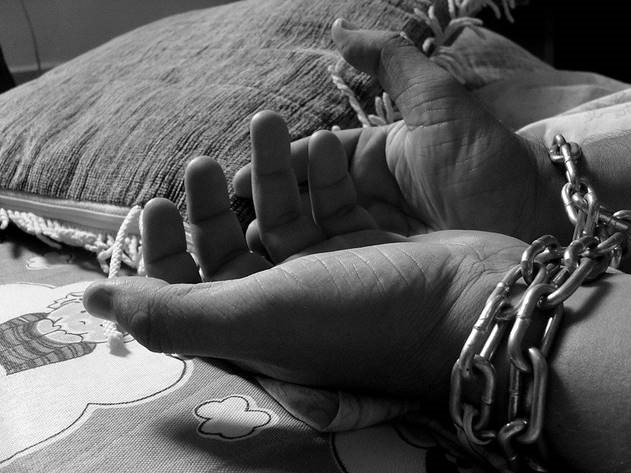On 2 February, the Indian Ministry of Social Justice and Empowerment informed the Lok Sabha (People’s House) that there had been about 340 deaths in the septic tanks and manholes in India. These deaths are the result of the continuation of manual scavenging, which is the practice of manually handling or carrying human excreta or animal waste. Manual scavenging has been prohibited on international and Indian levels through international instruments such as Universal Declaration of Human Rights (UDHR) and domestic legislations including The Prohibition of Employment as Manual Scavengers and Their Rehabilitation Act in 2013.
On the international front, organizations like the International Labor Organisation (ILO) and the World Bank have criticized the approach of the Indian government in dealing with this issue. In a combined report published by the ILO and the World Bank, it was alleged that manual scavenging is not necessarily curtailed but has been allowed to move ‘underground‘ in India. For instance, the Census of 2011 published by the Indian government claimed that there are around 2.6 million dry latrines in the country, which require the employment of manual scavengers for cleaning, but the total number of scavengers was reported to be only 13,384. There is no need for any extra-ordinary mathematical calculation to identify the discrepancies in the report.
In India, the practice of manual scavenging was first prohibited in 1993 and later in the year 2013 through specialized legislation. It is shocking to note that although the practice has been criminalized and penalized, not a single conviction has occurred. The National Crime Record Bureau (NCRB), a nodal agency that publishes the consolidated data of complaints and first informational reports of any crime, has no records for the offense of manual scavenging. Though the practice is hazardous to health, it has contributed to discrimination and untouchability in India. It is no hidden fact that Indian is divided into small feudal structures known as caste based on social stratification. The adoption of India’s Constitution in 1950 brought revolutionary changes to this system and penalized the practice of untouchability. However, scavenging has continued the ignominy of discrimination and untouchability. It has derogated the basic human dignity of scavengers.
The UDHR includes five references to human dignity. According to Klaus Dicke, the inclusion of the term ‘dignity’ is a “formal, transcendental norm to legitimize human rights claim.” Moreover, in his scholarly work, former judge of the Indian Supreme Court Justice A.K Sikri argues that dignity forms the fundamentals of human rights, without which these rights cannot be enjoyed.
In the Indian context, dignity has been mentioned thrice in the Indian Constitution: in the preamble, the directive principles of state policy and in the context of fundamental duties. In Maneka Gandhi vs. Union of India, The Indian Supreme Court emphasized that the right to live includes human dignity within its ambit. This judicial body has also relied on an American judgment, Munn vs. Illinois, to define ‘life’ as more than a mere animal existence.
In the context of manual scavenging, where there have been frequent deaths due to social pressure to enter into the septic tanks and manholes, preserving human dignity is not considered a priority. In Safai Karamchari Andolan vs. Union of India, the Indian Supreme Court accepted the notion that there has been a ‘lack’ of intent from India’s government to implement the international instruments and domestic legislation barring this practice. This lack of intent has directly violated the dignity of manual scavengers. Moreover, the court directed the government to take ‘swift’ action, but the recent death of 340 scavengers tells a different story. It reveals the institutionalized and systematic tail of oppression, keeping the dignity of these scavengers at peril. However, the call for ‘swift’ action from the Indian Supreme Court at least raised alarms and brought attention to this pressing issue.
In a documentary based on manual scavenging, the scavengers tell their tales of stigmatization, discrimination and undignified life. Moreover, the documentary portrays the helplessness of the manual scavengers, who are provided with no safety equipment’s to clean the hazardous septic tanks. These scavengers lamented the apathy of the state and society contributing to their plight. However, the social stigma and derogation of dignity is not limited solely to the person employed as a scavenger but it is also inherited and endured by their families.
In conclusion, manual scavengers in India have been deprived of their dignity and human rights. However, to ascertain the dignity of scavengers, there is a need for a holistic approach in policy framing, inclusive of variables such as caste, gender, and economic stability. The first step towards restoring the dignity of manual scavengers is accurate identification. Following identification, it is paramount to focus on the restoration of manual scavengers’ human dignity through state instruments, including legislation and specially targeted social welfare policies. However, liberated scavengers’ susceptibility to falling back to the practice is high due to societal pressure and economic insecurity. Therefore, the final step must emphasize complete economic and social rehabilitation. The rehabilitation process could be divided into two crucial grounds: preventing any pressure to return to scavenging and providing economic stability to this end. Until the three steps of liberalization, restoration of dignity, and rehabilitation are all effectively achieved in a synchronized manner, the news of undignified deaths by suffocation in septic tanks will continue to make headlines.
References
Census of India (2011) Census [online], Government of India, Available at: https://censusindia.gov.in/2011census/hlo/Data_sheet/India/Latrine.pdf. [Accessed 9 February 2021].
Dicke, K. (2002) ‘The Founding Function of Human Dignity in the Universal Declaration of Human Rights’, in D. Kretzmer and E. Klein, ed., The Concept of human dignity in human rights discourse.
International Labour Organization, World Bank Group and World Health Organization (2019), ‘Health, Safety and Dignity of Sanitation Worker: An initial Assessment’ [online], Available at: https://www.who.int/water_sanitation_health/publications/health-safety-dignity-of-sanitation-workers.pdf [Accessed 9 February 2021].
Maneka Gandhi vs. Union of India 1978 AIR 597 (India).
Safai Karamchari Andolan vs. Union of India 2005 (5) SCALE 267 (India).
ScoopWhoop (2016) “The Manual Scavengers of Mumbai”, Available at: https://www.youtube.com/watch?v=5gRwdDfxVL8
UN India (n.d.) ‘Breaking Free: Rehabilitating Manual Scavengers – UN India’ [online], Available at: https://in.one.un.org/page/breaking-free-rehabilitating-manual-scavengers/ [Accessed 9 February 2021].



Nice topic.Thank you very much